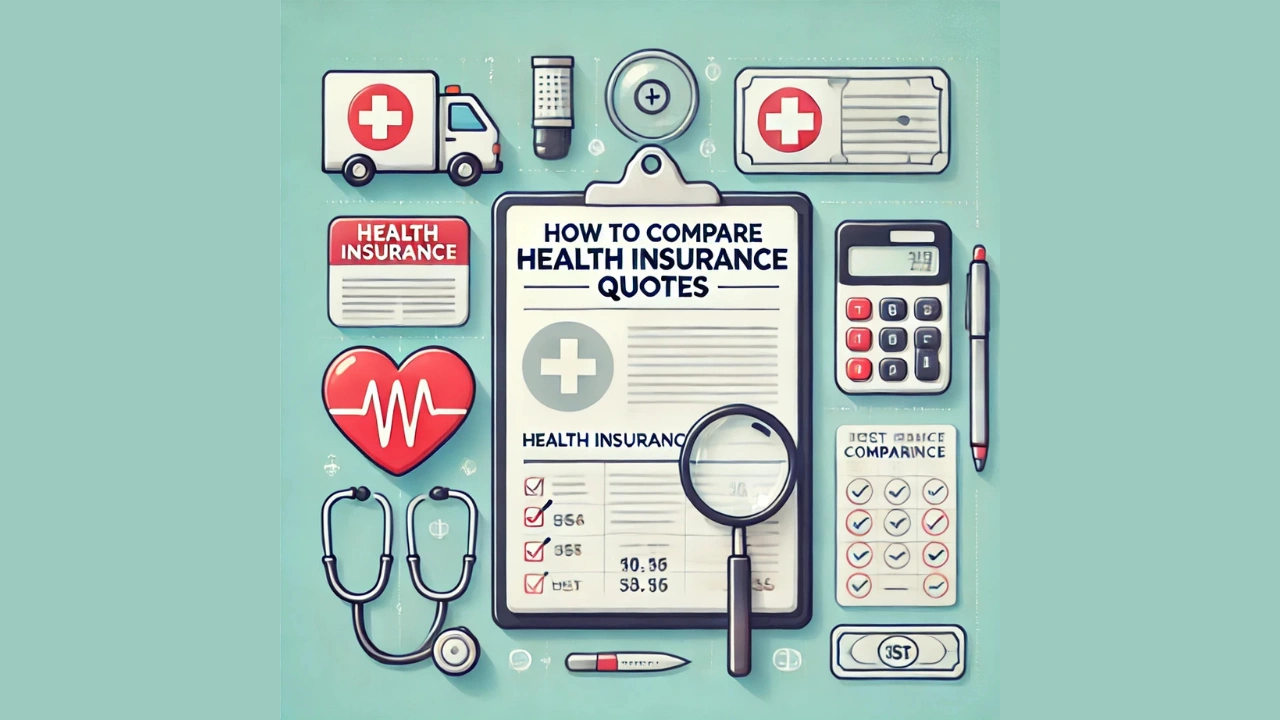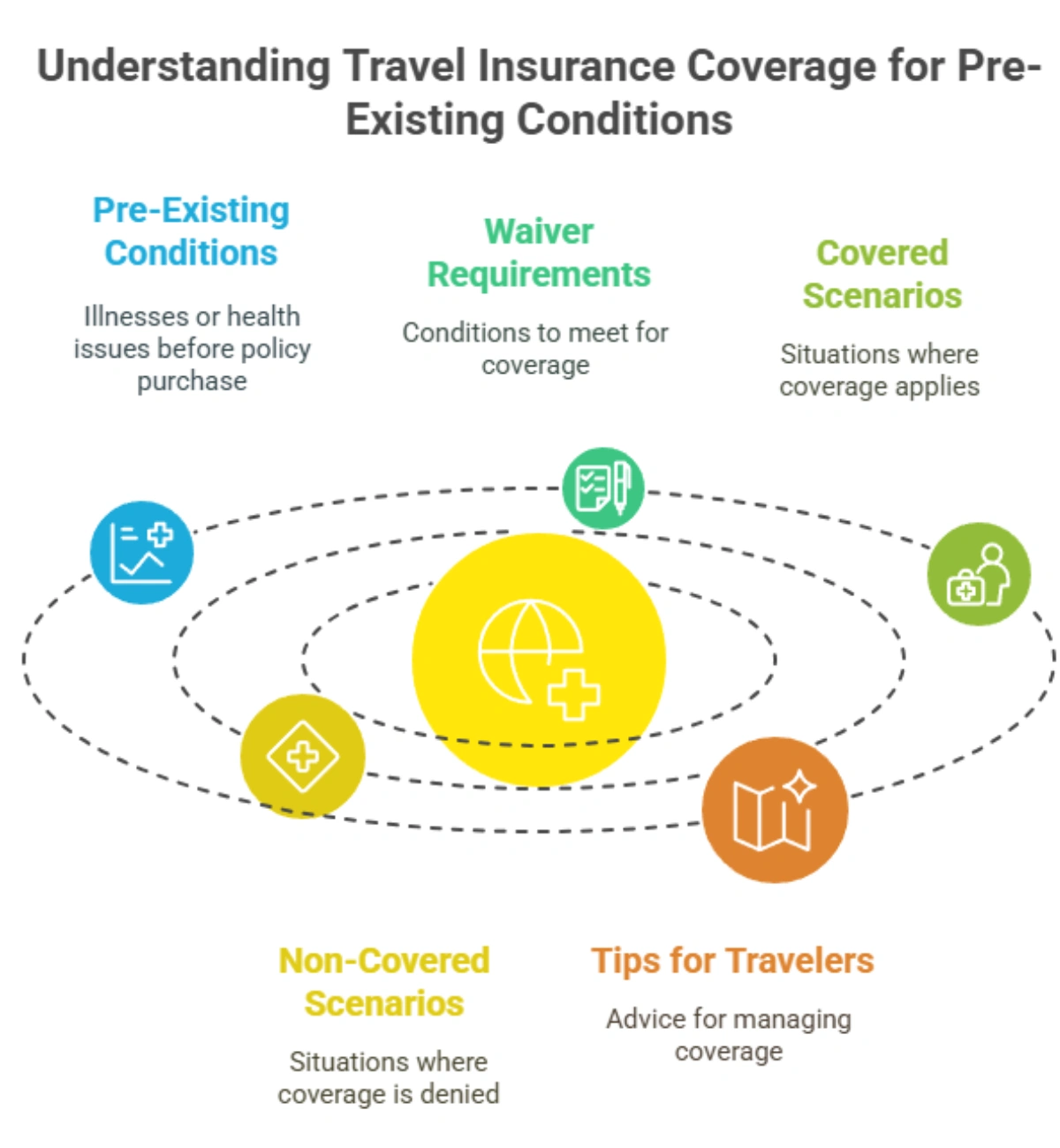How to Compare Health Insurance Quotes: Health insurance is one of the most important investments for you and your family. With so many options to choose from, comparing health insurance coverage can be a daunting task. Different plans have different premiums, deductibles, copayments, and provider networks, so do some research before making a decision.
When choosing a health insurance plan, comparing quotes is essential to finding the best coverage at an affordable price. With numerous providers offering different benefits, premiums, and deductibles, understanding how to effectively compare health insurance quotes can help you save money and ensure you receive the coverage that best suits your needs.
Your Healthcare Needs
Before you start comparing health insurance quotes, it’s crucial to assess your healthcare requirements. Take the time to consider the following factors:
- Frequency of doctor visits – If you have chronic conditions or require frequent check-ups, you may need a plan with lower copayments.
- Prescription medications – Some plans cover specific medications more comprehensively than others. Check to see if your medications are included in the insurer’s formulary.
- Preferred healthcare providers – If you have a preferred doctor or specialist, make sure they are included in the insurance provider’s network.
- Potential medical procedures – If you anticipate any surgeries, maternity care, or other major procedures, ensure your plan offers sufficient coverage.
A thorough understanding of these aspects will help you choose a plan that aligns with your medical needs and budget.
Look at Monthly Premiums
The premium is the amount you pay each month for your health insurance coverage. While it might be tempting to choose a plan with the lowest premium, it’s important to balance cost with the coverage you receive.
- Low-premium plans – These usually come with higher deductibles and out-of-pocket costs. They are best suited for individuals who rarely need medical care.
- High-premium plans – These plans typically have lower deductibles, meaning they cover medical expenses sooner, making them ideal for those who frequently visit doctors or need regular treatments.
Instead of focusing solely on the premium, consider the overall cost of the plan, including deductibles and out-of-pocket expenses.
Examine Deductibles and Out-of-Pocket Costs
A deductible is the amount you must pay out of pocket before your insurance starts covering medical expenses. However, there are other costs you should also take into account:
- Copayments – Fixed amounts you pay for doctor visits, specialist consultations, or prescriptions.
- Coinsurance – A percentage of the costs you must pay after meeting your deductible. For instance, if your plan covers 80%, you’ll be responsible for the remaining 20%.
- Out-of-pocket maximums – This is the maximum amount you will pay in a year for covered healthcare services. Once you reach this limit, the insurance company covers 100% of additional costs.
These costs will help you select a plan that fits within your financial means while providing adequate coverage.
Compare Network Providers
Insurance companies have networks of healthcare providers, including doctors, specialists, hospitals, and clinics. Choosing an in-network provider ensures lower costs. Here are the main types of networks:
- HMO (Health Maintenance Organization) – Requires you to choose a primary care physician (PCP) and get referrals for specialists. Coverage is limited to in-network providers.
- PPO (Preferred Provider Organization) – Offers more flexibility in choosing doctors and specialists without needing referrals. It covers both in-network and out-of-network providers, though the latter costs more.
- EPO (Exclusive Provider Organization) – Requires you to use in-network providers but does not require referrals for specialists.
Before selecting a plan, confirm that your preferred doctors and healthcare facilities are in-network to avoid high costs.
Review Prescription Drug Coverage
If you take medications regularly, check the plan’s formulary (list of covered medications). Some plans categorize drugs into different tiers, where lower-tier drugs cost less than higher-tier ones. Here are key considerations:
- Ensure your necessary prescriptions are included.
- Check copayments or coinsurance for each tier.
- Look for mail-order options that may offer discounts on long-term prescriptions.
Your prescription drug coverage can help prevent unexpected medication expenses.
Check for Additional Benefits
Many insurance plans offer extra benefits beyond basic healthcare coverage. These additional perks can add significant value to your policy. Some common benefits include:
- Telehealth services – Virtual doctor visits can save you time and money.
- Wellness programs – Some plans provide incentives for maintaining a healthy lifestyle, such as discounts on gym memberships.
- Mental health coverage – Check if therapy, counseling, and psychiatric care are included.
- Maternity and newborn care – Essential for expectant mothers or those planning to have children.
- Dental and vision coverage – Some health insurance plans bundle these services, while others require separate policies.
These benefits can significantly enhance the value of your plan, so consider them when comparing options.
Consider Financial Assistance Options
You may qualify for financial assistance depending on your income level. Several programs and subsidies can help lower your health insurance costs:
- The Affordable Care Act (ACA) Marketplace – Provides tax credits based on income to reduce premiums.
- Medicaid and Medicare – Government programs offering coverage for low-income individuals, seniors, and those with disabilities.
- Employer-sponsored plans – Many employers offer group health insurance at a lower rate than individual plans.
Use Online Comparison Tools
To streamline the comparison process, take advantage of online health insurance comparison tools. Websites like Healthcare.gov and private insurance platforms allow you to:
- Compare multiple plans side by side.
- Filter by premiums, deductibles, and coverage options.
- Check for subsidies and discounts you may qualify for.
These tools make it easier to evaluate different policies and make an informed decision.
Read Customer Reviews and Ratings
Before finalizing your choice, research the insurance company’s reputation. Check reviews on:
- Customer service quality – How responsive and helpful is the insurer?
- Claim processing efficiency – Are claims processed quickly and fairly?
- Overall satisfaction – Look for real customer experiences to assess reliability.
Websites like the Better Business Bureau (BBB) and Trustpilot provide valuable insights from policyholders.
Expert Advice
If you’re uncertain about any aspect of a health insurance plan, consult a licensed insurance agent or broker. They can:
- Explain complex terms and conditions.
- Help you find plans that match your needs and budget.
- Assist with the application and enrollment process.
Speaking with an expert can give you confidence in your final decision.
Conclusion
Choosing health insurance is not just about looking at your monthly premiums. Researching deductibles, coverage, health insurance, and other benefits can help you find a plan that meets your needs and fits within your budget. Take your time, do your research, do your research, research online, seek professional advice and make an informed decision.
FAQ
How to compare two health insurance plans?
Compare premiums, deductibles, copayments, and out-of-pocket maximums. Check network coverage, prescription drug benefits, and included services. Consider flexibility in choosing doctors and hospitals. Review customer reviews and claim processes. Choose the plan that offers the best value based on your healthcare needs.
What is the best app to compare health insurance?
The best apps for comparing health insurance include Policygenius, eHealth, and HealthCare.gov. These platforms provide side-by-side comparisons of coverage, pricing, and provider networks. They also offer tools to estimate costs based on personal health needs, making selection easier and more informed.
Is $200 a month good for health insurance?
A $200 monthly premium is affordable but may come with high deductibles and limited coverage. For individuals, it might cover basic plans or catastrophic insurance. Families or those needing comprehensive care may require higher premiums for better benefits and lower out-of-pocket costs.
What is a fair price for health insurance?
How to Compare Health Insurance Quotes, A fair price depends on coverage, location, and health needs. On average, individual plans cost $400–$600 monthly, while family plans range from $1,200–$1,800. A good plan balances affordability with low deductibles, broad provider networks, and essential health benefits.
Do doctors prefer HMO or PPO?
How to Compare Health Insurance Quotes, Doctors often prefer PPOs because they allow higher reimbursement rates and greater flexibility in treating patients. HMOs require referrals and have strict network rules, which can limit choices for both doctors and patients. However, HMOs provide consistent patient volume, appealing to some providers.






